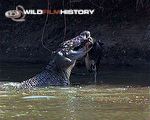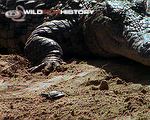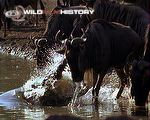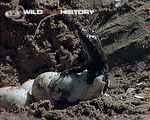Here be Dragons
(1989)
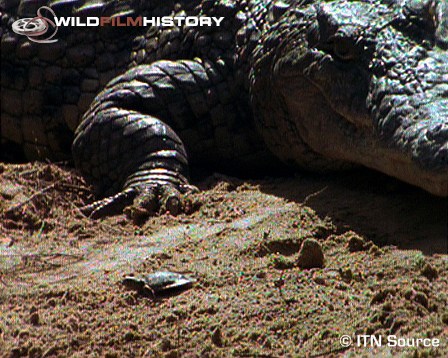
The last surviving giants of the dinosaur age, crocodiles, are among the world's most feared predators. Their huge size and crushingly strong jaws make them monarchs of rivers and lakes. The Grumetti River, winding its way across the Serengeti Plain, provides the most dramatic crocodile show in Africa. In the dry season, its shrinking pools are crowded with some of the largest crocs on the continent. They fiercely guard their eggs, but thousands of baby crocs never reach maturity, being taken by marsh mongoose, monitor lizards and even fish eagle.
An extraordinary glimpse into the world of these highly evolved reptilian predators, Here be Dragons is a celebration of the Nile crocodile, contrasting its brutal ambush tactics with its gentle parenting and strong family ties.
Combining close-up and slow-motion shots, thrilling scenes record crocodile strikes in all their gruesome glory, their powerful jaws crushing down on their unsuspecting prey. Devastatingly efficient hunters, stunning cinematography details the crocodiles as they work together to snare, and literally twist apart, wildebeest and other large prey.
Exploring the crocodile's remarkable behaviour, this award-winning programme was produced by the legendary African filmmaker Alan Root and employs the talents of renowned wildlife cinematographers Mark Deeble and Victoria Stone. Beautifully filmed, memorable scenes show protective mothers as they lay their eggs, the hatching of the miniature crocs and the cradling of the newborns in their mother's huge jaws, providing an incredible insight into the crocodile's remarkable maternal behaviour.
Hugely popular, Here Be Dragons broke the stereotypical portrayal of crocodiles, examining not only their fearsome predation but also the more social aspects of their behaviour in Africa's Grumeti River.
Winner of a "Special Award" at the Wildscreen Film Festival "Panda" awards ceremony held in Bristol, UK, 1990



